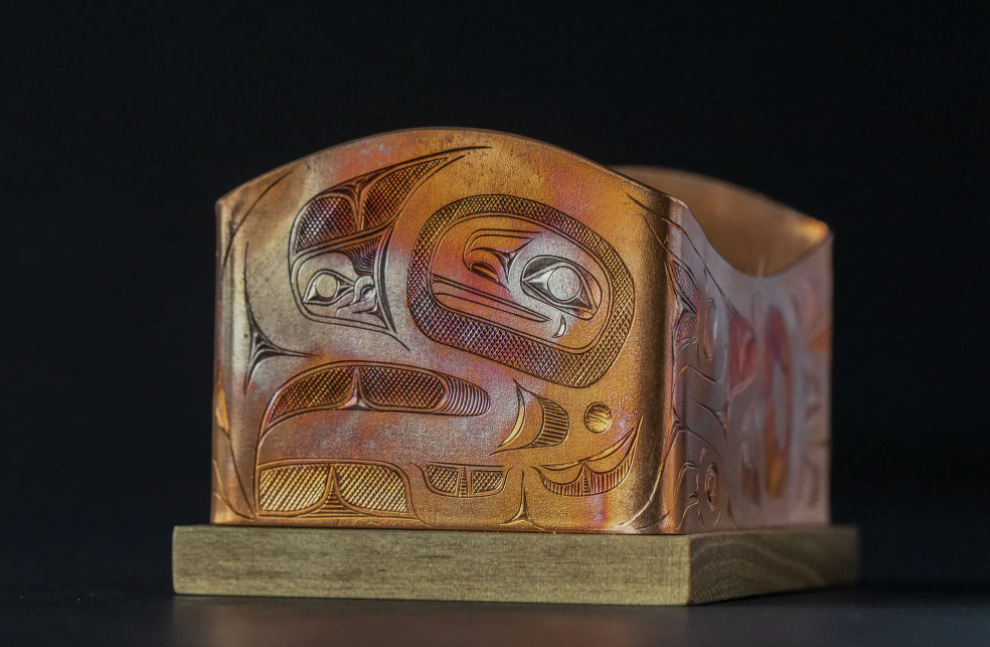
This week marks the beginning of Celebration: An event that brings thousands of Native Alaskan people to Juneau every two years. But this year, the festivities aren’t happening in-person. They’re happening online, due to COVID-19. That includes a Northwest Coast art show, where art pieces were judged from a distance.
Deborah Head, or Aanutein as she’s known by her Tlingit name, is sitting in her car about a mile from her house in Craig. She drives into town to get better cell phone reception. It’s also how she got a wifi signal so she could evaluate digital pictures of artist submissions.
“Going to a friends house and saying, ‘Can I sit in your parking lot and do some downloading?'” Head said.
Besides the technology issues, Head says it was extremely challenging judging the intricate creations, like a formline painted drum or a beaded Chilkat wall hanging, from afar.
“We knew the biggest obstacle was going to be not being able to go to Juneau and hold the pieces,” Head said.
Sealaska Heritage Institute organizes the juried art show as a way to amplify and encourage Native Northwest Coast art. But in March, the organization had to pivot this year’s exhibit to an online format after news broke that Celebration would be held virtually. Artists were given the choice to pull out the work they submitted back in 2019. Twenty-six artists decided to still enter the competition — knowing their work would be experienced by a few online photos rather than the judges seeing it up close.
Head says, as a judge, that was a lot of responsibility. She combed through photos saved on her laptop for hours. Then, she’d wake up around 4 a.m. and do it again.
“It was a lot of revisiting and revisiting,” Head said. “And when a piece is well done, it just jumps out at you.”
Head has had her own journey as an artist. She started out as the lone cedar bark weaver in Craig. She had to learn much of the technique herself. Eventually, she was able to take a class with famed Haida weaver, Delores Churchill. She recalls the class started early in the morning.
“By 10 o’clock, I was out behind a tree crying because it was frustrating because I can tend to be a perfectionist, and that never goes away,” she said with a laugh.
But Head mastered the Haida style of weaving. Now, she creates pieces on commission and sells items like baskets to galleries. Lately, she’s been interested in an endangered style of Tlingit root weaving.
As for judging traditional art virtually, Head says she looked for meticulous details, creative flair and also authenticity. In the online show, there was a piece that exemplified that. You could see it was something special even through a computer screen: a spruce root basket woven by a beginner in British Columbia.
“You could see that maybe the person was reared by an elder, an auntie, a grandma — something like that,” Head said. “I can’t wait to follow this person.”
That submission, by Marlene Liddle, was a division winner. In total, eighteen artists placed in the art competition or received honorable mentions. You can see the full list of Sealaska Heritage Institute’s Northwest Coast Juried Art Show & Competition winners here.

